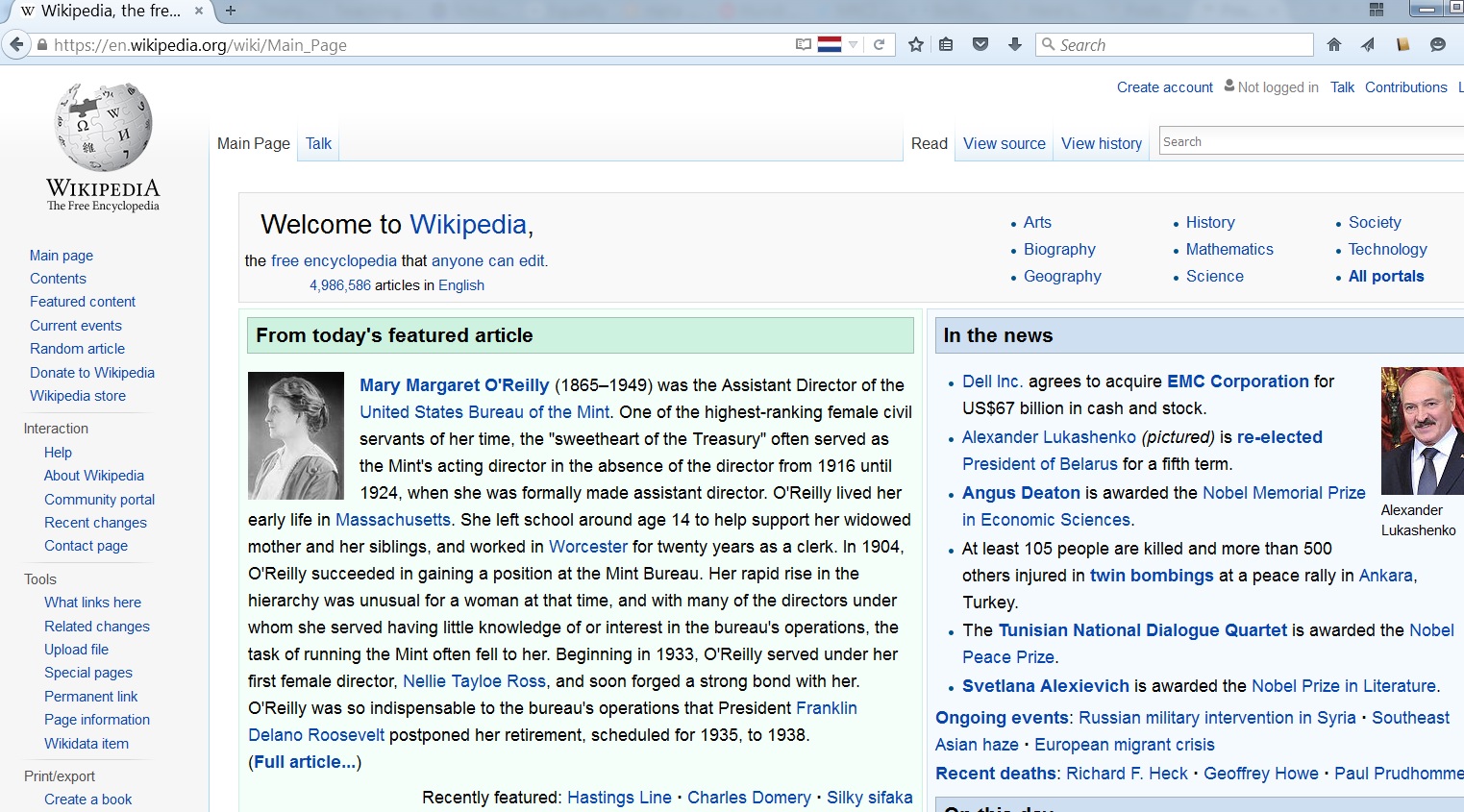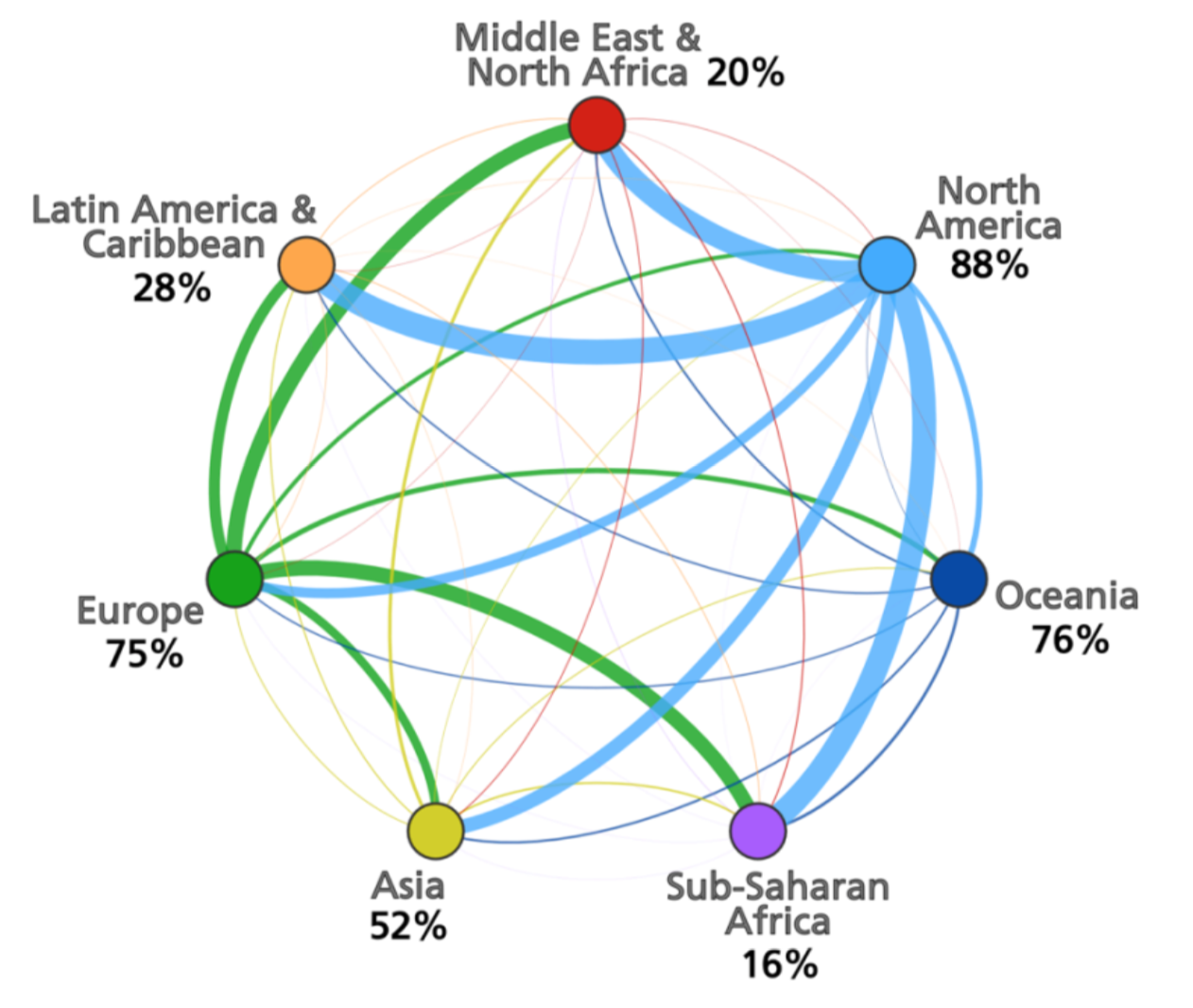
Now at the tender age of just 14 years, beloved by students and ‘instant experts’, intensely disliked by many teachers and examiners; refuge of lazy journalists – one of the world’s top 10 internet sites and, without doubt its most popular general reference source (one of the top 20 websites in 95% of the world) – you guessed it: Wikipedia.
In the digital world, its influence is pervasive and, it would appear relentless. It is routinely many people’s first port of call in researching an issue and, unfortunately, all too often their last port of call. But what worldview does Wikipedia represent and what are some of the implications of that view? And what does it have to do with development education?
Recently published research (part of a broader project on the geography of the internet) by the University of Oxford Internet Institute has highlighted the severe limitations of the Wikipedia view of the world. The 3-year research project by Mark Graham, Ralph Straumann and Bernie Hogan (soon to be published in the Annals of the Association of American Geographers) offers stinging critiques of Wikipedia:
- The research quotes earlier studies that indicate Wikipedia is only edited by a tiny proportion of its users; such editors are overwhelmingly educated and male (only an estimated 1 in 10 editors are female) and the information included is overwhelmingly likely to represent topics in the ‘Global North’ than the ‘Global South’
- Despite their being 3 billion internet users worldwide, the relative ‘democratisation of the Internet’ has not brought about a corresponding ‘democratisation of voice and participation’
- Wikipedia’s view of the world is written by the west – nearly half of all edits (45%) to articles about places were made from just five countries (the UK, US, France, Germany and Italy)
- The Netherlands alone – which doesn’t even fit in the top ten countries by number of edits – still has more edits to its name than all of Africa combined
- Of the 50 countries with most edits all but 8 are in Europe, Asia, North America or Oceania – only 6 (Brazil, Mexico, Argentina, Chile, Colombia and Peru) are in Latin America & the Caribbean, two (Israel and Iran) are in the Middle East & North Africa, and none are in Sub-Saharan Africa
- ‘high-income countries have a disproportionately loud voice on the crowd-sourced encyclopaedia’
- When non-western sources do contribute, they write largely about the West and so, ‘Local voices rarely represent and define their own country’

Selected key quotes:
‘Even on Wikipedia, widely touted as one of the web’s most open and most inclusive platforms, we see that low-income countries are represented far less than locations that are economically advantaged. Europe and North America, with already high levels of internet access have the loudest voices and they largely define the world view of even the smaller, less affluent countries rather than the people who live in them.’
‘In practice, we see how existing inequalities and imbalances don’t just make places invisible, but also suffocate certain voices and perspectives. Even those in less economically advantaged places are drawn to write online about places that are already highlighted in a bright glow of information production.’
‘The fact that North America has over one hundred times the editing power of Sub-Saharan Africa means that only a tiny fraction of North American editors focused on topics of interest to Sub-Saharan Africa. African editors could potentially make a large difference in the characteristics of knowledge being produced. Said differently, countries that are home to large blocks of editors have the ability to dominate the production of knowledge about smaller countries.’
In sum, we have traditionally seen a situation in which many of the world’s peripheries have not just been unable to exert their voices, but have also been enrolled into subordinate positions in webs of knowledge.’
The authors also tellingly quote the work of Yuri Takhteyev:
‘While a few centuries ago colonial subjects were often brought to the center by force, today many go there of their own will. Often, it is the most talented of the peripheral individuals who gather at the center….Those who remain at the periphery, however, also contribute to the reproduction of central power, often dedicating their work to bridging the remaining gaps between the local context and the resources deployed from the centres. In doing so, they often make such resources (and those who control them) even more powerful.’
The research ultimately points to what its authors call ‘informational magnetism’ that is created by the world’s ‘economic cores’ that make it difficult to reshape information networks and hierarchies.
Nothing new here – an ongoing message from development education – we need to highlight other voices but the question remains ‘which ones’?
……………………………………………………………………………………………………………
Read the full paper (and not just the summary!) on Digital Divisions of Labour and Informational Magnetism: Mapping Participation in Wikipedia (Sept 7th, 2015) by Mark Graham, Ralph K Straumann and Bernie Hogan in Annals of the Association of American Geographers. Forthcoming.
